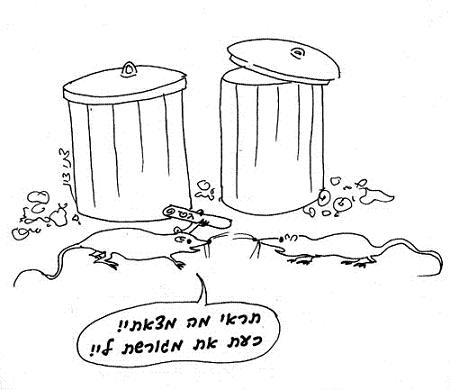
The writing of a bill of divorcement (get) and the giving of it to a woman has been discussed in great detail. Thus, for example, if the husband threw the get into a yard which belongs to the woman, it is considered as though the woman had been handed the get. There was an incident in which a man threw the get into his wife’s yard and it fell between some barrels. When they went to find the get all they found was a mezuzah parchment. One of the sages, Rav Nachman, ruled that since we do not customarily find mezuzot between barrels, it is reasonable to assume that the husband threw a mezuzah and not a get, so the woman is not divorced. The scholars added conditions to his words and said that if more than a single mezuzah is found, since we now know that there would be mezuzot there without the husband’s throw, we assume that he did indeed throw a get and that the reason the get was not found is that mice took it; the divorce is valid. In another incident which came to the attention of the sages, a man entered a synagogue, took a Torah scroll out of the Holy Ark, gave it to his wife, and said, “This is your get and you are divorced.” One of the sages, Rav Yossef, said that giving her a Torah scroll cannot be a substitute for giving her a get. He explained that one does not fear the husband wrote the text of the get, as required by Jewish law, on the back of the Torah scroll in ink which is difficult to discern, such as ink the color of the parchment, for writing which is not discernable and is not readable is not valid for the writing of a get We also do not fear that the husband intended to divorce his wife using the text which is part of the Torah, “he writes her a certificate of divorce” (Deuteronomy 24:1) for one of the requirements of a valid get is that it was written specifically as a bill of divorcement and specifically for that woman. Since the scribe who wrote the Torah scroll did not intend, in writing this verse, the divorce of this specific woman, it is not valid as a get. Similarly, we do not fear lest the husband paid the scribe to write this verse as a bill of divorcement for his wife, for one of the rules of a valid get is that the names of the husband and wife appear in it, and their names are not found in the Torah scroll. The scholars asked: Why did the sage above explain a ruling which is self explanatory, that a Torah scroll cannot serve as a substitute for a get? Answer: The sage mentioned above, Rav Yossef, wanted to show that if the writing is not discernible, it is not valid as a get.
(Babylonian Talmud, Tractate Gittin 19b-20a)
